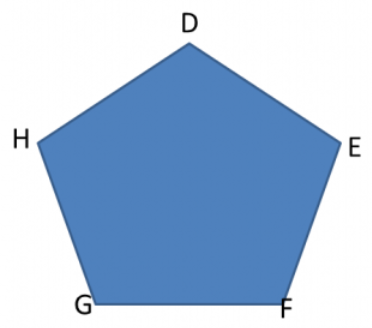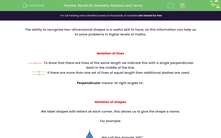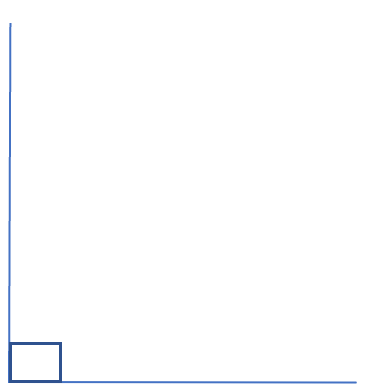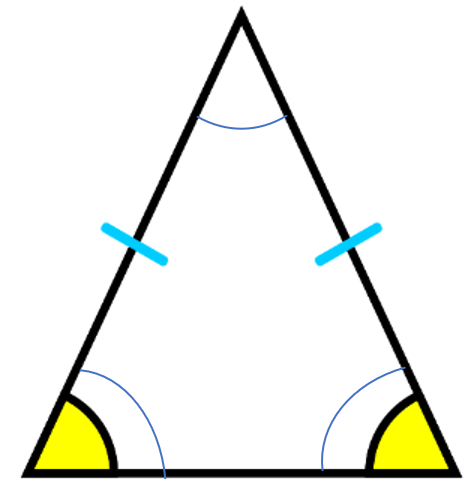The ability to recognise two-dimensional shapes is a useful skill to have, as this information can help us to solve problems in higher levels of maths.
Notation of lines


Perpendicular means 'at right angles to'.
Notation of shapes
We label shapes with letters at each corner, this allows us to give the shape a name.
For example:


Notation of angles
We use the following symbol to mean angle: ∠
We describe the angle above as ∠ EFG or ∠ GFE.
Right angles, like the one above, are shown with a square in the corner.
When we want to show that specific angles are the same, we use more than one arch:
Notation of parallel lines
Parallel lines never meet. They are shown with an arrow across the middle of the line.
If there are more than one set of parallel lines then additional arrows are used.
Now, it's over to you to put this information into practice!
In this activity, we will identify and apply geometric terms and notations to help us solve problems involving 2D shapes.













